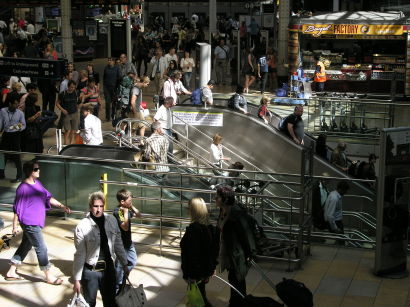NETWORK RAIL has unveiled its multi-billion pound plan for tomorrow's railway – which it hopes to be building during the next five-year Control Period, starting in 2014.
With demand for passenger and freight capacity apparently set to rise indefinitely, Network Rail has painted a broad picture which includes major projects, some of which are new. The additions include options to extend electrification from Bedford to Sheffield, on North Transpennine routes and on several lines in Strathclyde.
Network Rail demonstrated that is acutely conscious of the pressure on spending, when it commented: 'The Initial Industry Plan sets out how the industry could build on recent improvements in cost efficiency and cut the cost of running the railway by £1.3 billion a year by 2019. These savings, combined with growth, could see the annual cost of the railway to the taxpayer reduced. This would be achieved through initiatives already in hand, greater cross-industry collaboration and changes in the way government procures passenger rail services.'
Thameslink, Crossrail and presently authorised electrification schemes come in at just under £5 billion, and the additional schemes would add an extra £5.6 billion to the capital projects budget. These include the Northern Hub, based on Manchester, as well as further electrification.
Network Rail group strategy director Paul Plummer said: "The railways are booming, with more and more people choosing rail. Closer collaboration within the industry will deliver even more efficiencies. This revenue growth and improved efficiency taken together provide governments with real choices to consider, choices around the appropriate balance between investment, fares and subsidy."
The plans have received broad approval from industry bodies such as ATOC and the watchdog Passenger Focus, although Passenger Focus added a warning. Its chief executive Anthony Smith promised to read the plan carefully, saying: “Passengers want value for money fares and a reliable, frequent service with a good chance of getting a seat. An industry plan is welcome but what passengers will want to be clear about is what is the passenger plan? What does this all mean for train performance, the ability to get a seat – and fares?”
Long negotiations lie ahead with the Office of Rail Regulation before the budget for Control Period 5 can be agreed. But Network Rail described its new proposals as 'the first major step' towards adding an extra 180,000 peak hour seats and boosting freight tonne/kilometres by 30 per cent, while also cutting £1.3 billion from the industry's costs by 2019.


